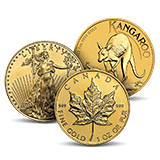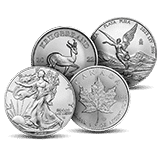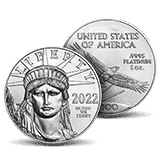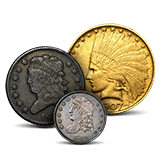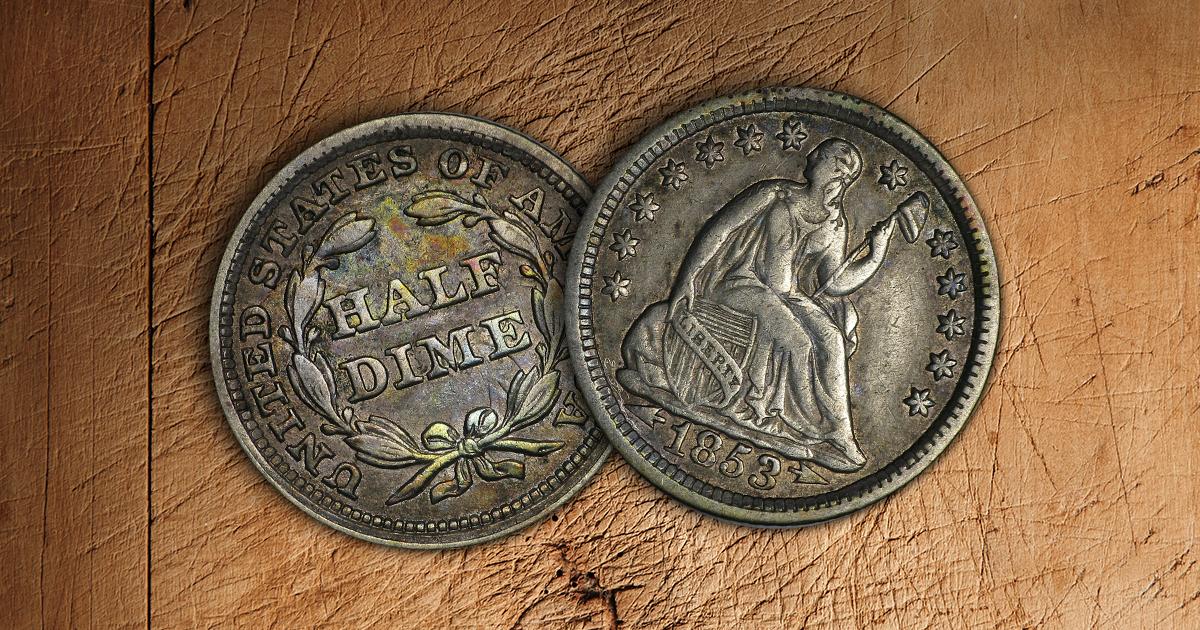
The 1853 half dime belongs to the Seated Liberty series, which was designed by Christian Gobrecht and introduced in 1837 as part of a broader effort to modernize American coinage. The design appeared on half dimes, dimes, quarters, half dollars, and dollars, remained in use for several decades, undergoing multiple modifications over time.
The coin’s significance reflects its connection to the Coinage Act of 1853, which reduced the weight of silver coins to combat hoarding caused by rising silver prices and offset mint seigniorage. This was a direct response to the California Gold Rush, which flooded the economy with gold.
Changes Leading Up to 1853
The Seated Liberty series saw several design modifications before the major modifications of 1853. These changes were driven by both aesthetic considerations and practical minting needs.
The Original Seated Liberty Design (1837)
- Designed by Christian Gobrecht, the Seated Liberty design debuted on the Half Dime in 1837.
- Simplified obverse: Depicted Seated Liberty holding a shield and a pole topped with a Phrygian cap, symbolizing freedom.
- Reverse: Featured a small, laurel wreath surrounding the denomination “HALF DIME.”
- The 1837 design lacked stars, creating a stark, open field.
Early Modifications to Seated Liberty Coins
- 1838: Thirteen stars were placed around Liberty on the obverse, symbolizing the states in the Union. This change aligned with other modifications to the Seated Liberty design.
- 1840: Sculptor Robert Ball Hughes added drapery below Liberty’s arm, improving the balance and strike quality of the design.
1853: A Pivotal Year for the Half Dime
The Coinage Act of 1853: A Response to Economic Crisis
- The California Gold Rush increased the availability of gold, devaluing gold relative to silver. As a result, silver coins were hoarded or melted because their melt value exceeded their face value.
- To restore silver coin circulation, Congress passed the Coinage Act of February 21, 1853, reducing the weight of silver coins, including the half dime from 1.34 grams to 1.24 grams.
Arrows at the Date: Marking the Change
- To differentiate the new, lighter-weight coins from previous issues, the U.S. Mint added arrows on either side of the date.
- This design element helped the public recognize the revised weight issues at a glance.
The Removal of Rays: A Short-Lived Experiment
- Quarters and half dollars received both arrows and rays, with rays radiating from behind the eagle on the reverse.
- However, the rays proved difficult to strike, causing excessive die wear, and were removed in 1854.
- Since the half dime and dime designs only had arrows added, they avoided these production issues.
The Civil War’s Impact on Coin Production
Although the 1853 Coinage Act stabilized silver coinage, the outbreak of the Civil War in 1861 triggered another wave of economic disruptions, affecting coin production.
Loss of Southern Mints
The secession of Southern states led to the closure of three U.S. Mints:
- Charlotte Mint in North Carolina, which primarily struck gold coins.
- Dahlonega Mint in Georgia, which also struck gold coins.
- New Orleans Mint in Louisiana, which produced both silver and gold coins (including half dimes).
With only two out of five Mint branches operational (the Philadelphia and San Francisco Mints), coin production dropped sharply.
How the Civil War Affected the Legacy of the 1853 Half Dime
- The arrows-at-date system introduced in 1853 was later revived in 1873 when another weight reduction occurred.
- The removal of silver coins from circulation during the Civil War set the stage for the eventual discontinuation of the half dime in favor of the five-cent nickel in 1866.
The 1853 issue of the half dime is a milestone in U.S. coinage history, reflecting economic policy shifts, legislative changes, and evolving minting techniques. Its distinctive arrows-at-date design marked a critical transition in silver coin circulation, and its impact was later echoed in the 1873 Coinage Act.
As a highly collectible numismatic artifact, the 1853 Half Dime remains in strong demand, particularly in high grades and proof versions. Its story provides valuable insight into how economic crises, war, and legislative policies shape U.S. coinage—making it an essential piece of American numismatic history.

